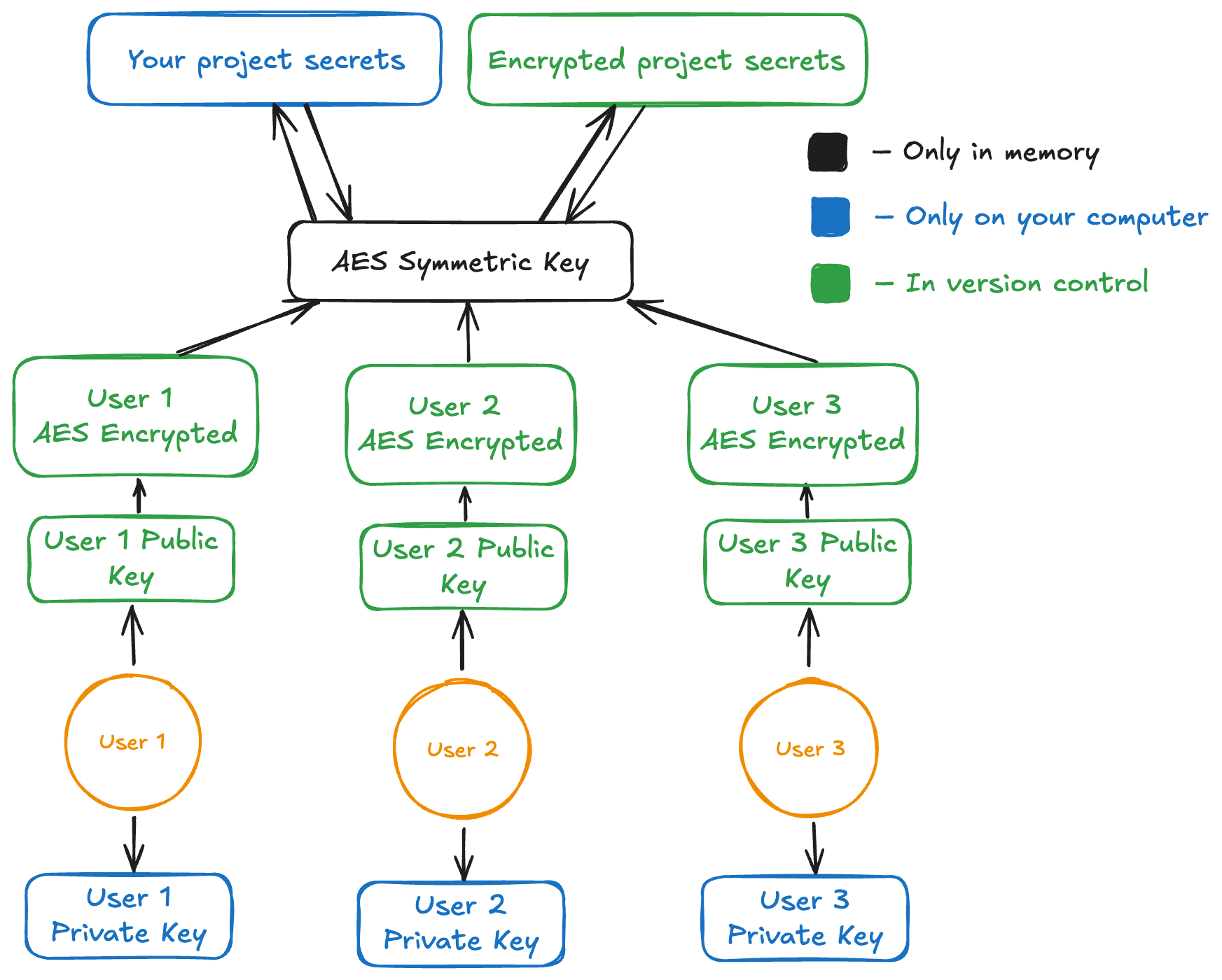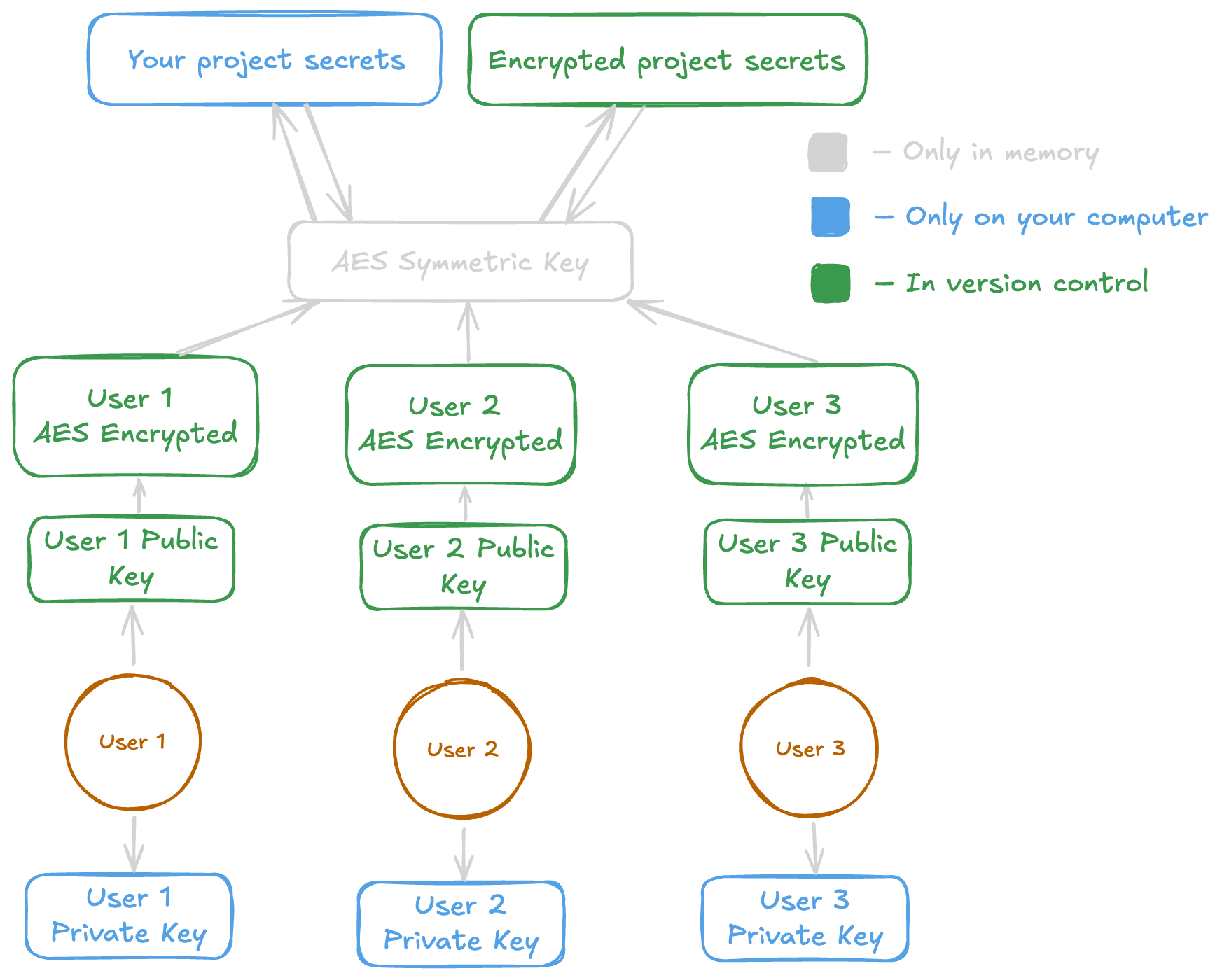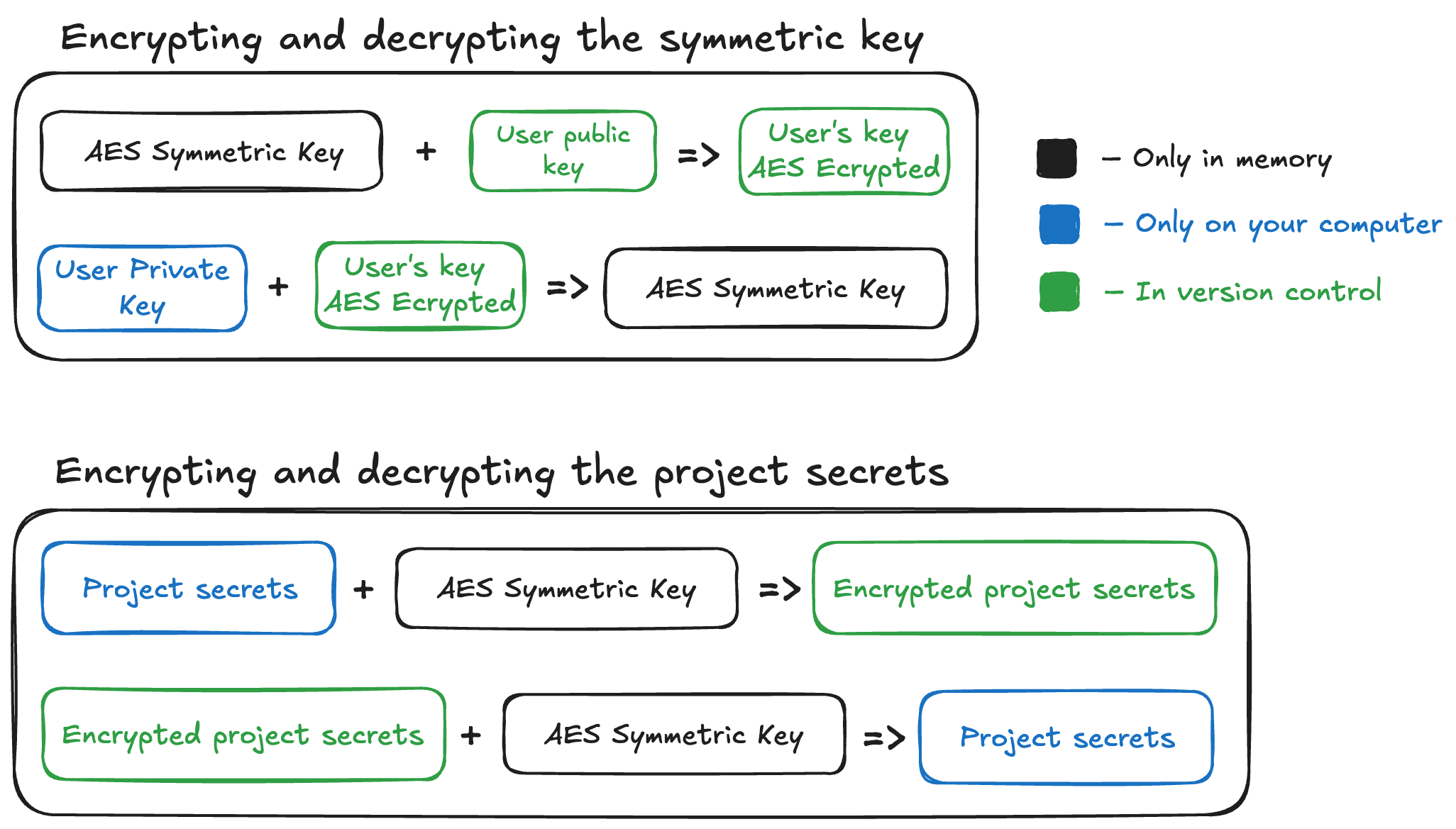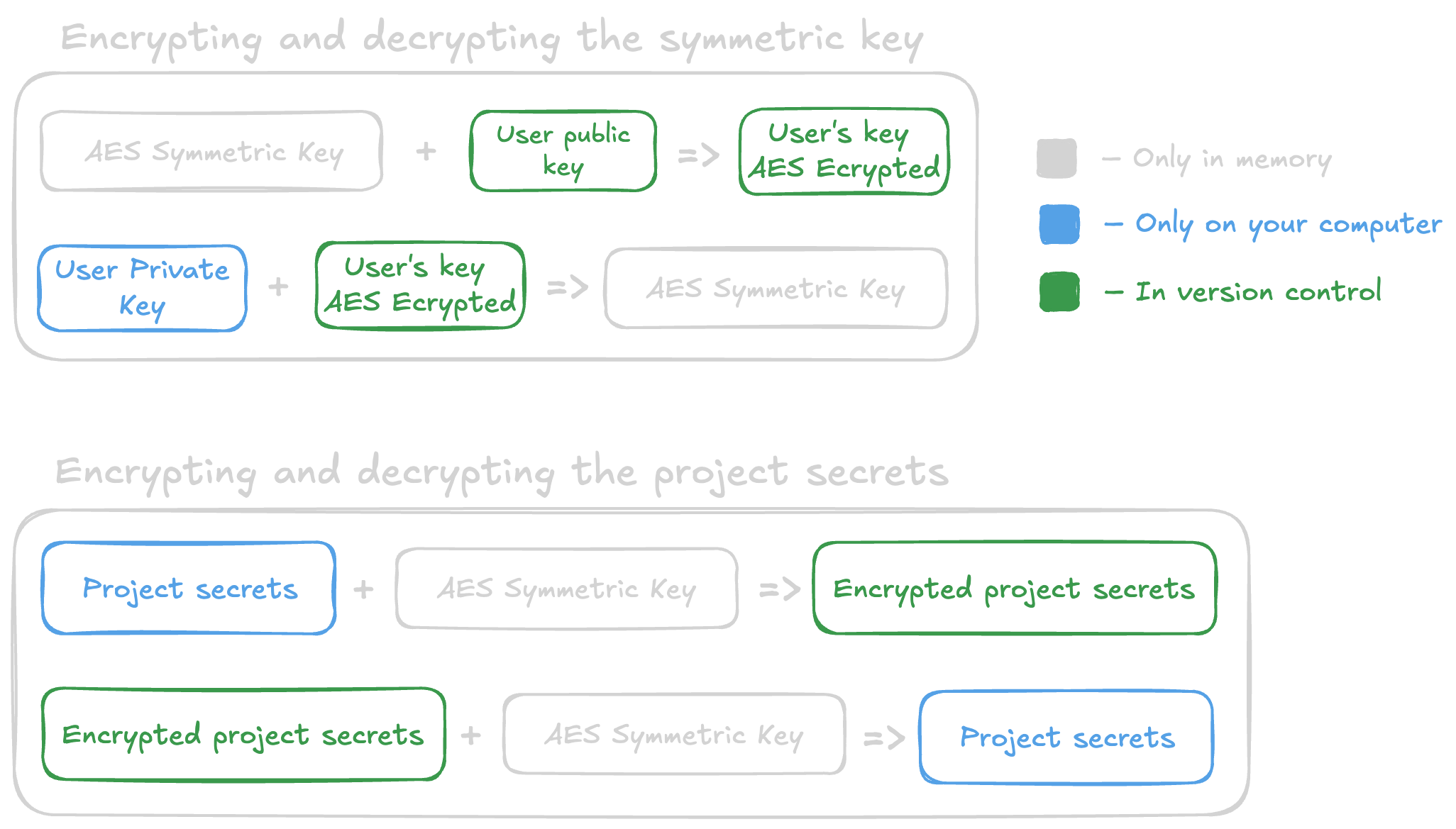Encryption and Decryption
Kānuka uses open standards for encryption, and all the code is open source. For the symmetric key, Kānuka uses the AES 256-bit standard. For the public/private key pair, Kānuka uses the RSA 2048-bit standard. Both these standards are used widely across the internet. RSA is used any time you browse the internet with an HTTPS connection, while AES is used whenever you are logged into the Wi-Fi router.
How does Kānuka work?
Section titled “How does Kānuka work?”Here is the basic workflow for encryption, assuming you have access:
- Kānuka will search your entire repo for every file that has
.envin the name, but not.kanuka. - Kānuka will then use your private key to decrypt your symmetric key that
resides in
project_root/.kanuka/secrets/your_username.kanuka. - Kānuka will use that decrypted symmetric key to encrypt every file found in step 1.
- Kānuka will then name those files exactly the same, just with
.kanukaadded onto the end.
For decryption, the same is done just in reverse. Instead of searching for all
.env files, it will search for all .kanuka files.
Why is this secure?
Section titled “Why is this secure?”Kānuka is secure because all sensitive information is only ever in memory or on your local device.


These are — in broad strokes — what ends up happening during an encryption and decryption process.


Continue reading to learn about what happens during registration.